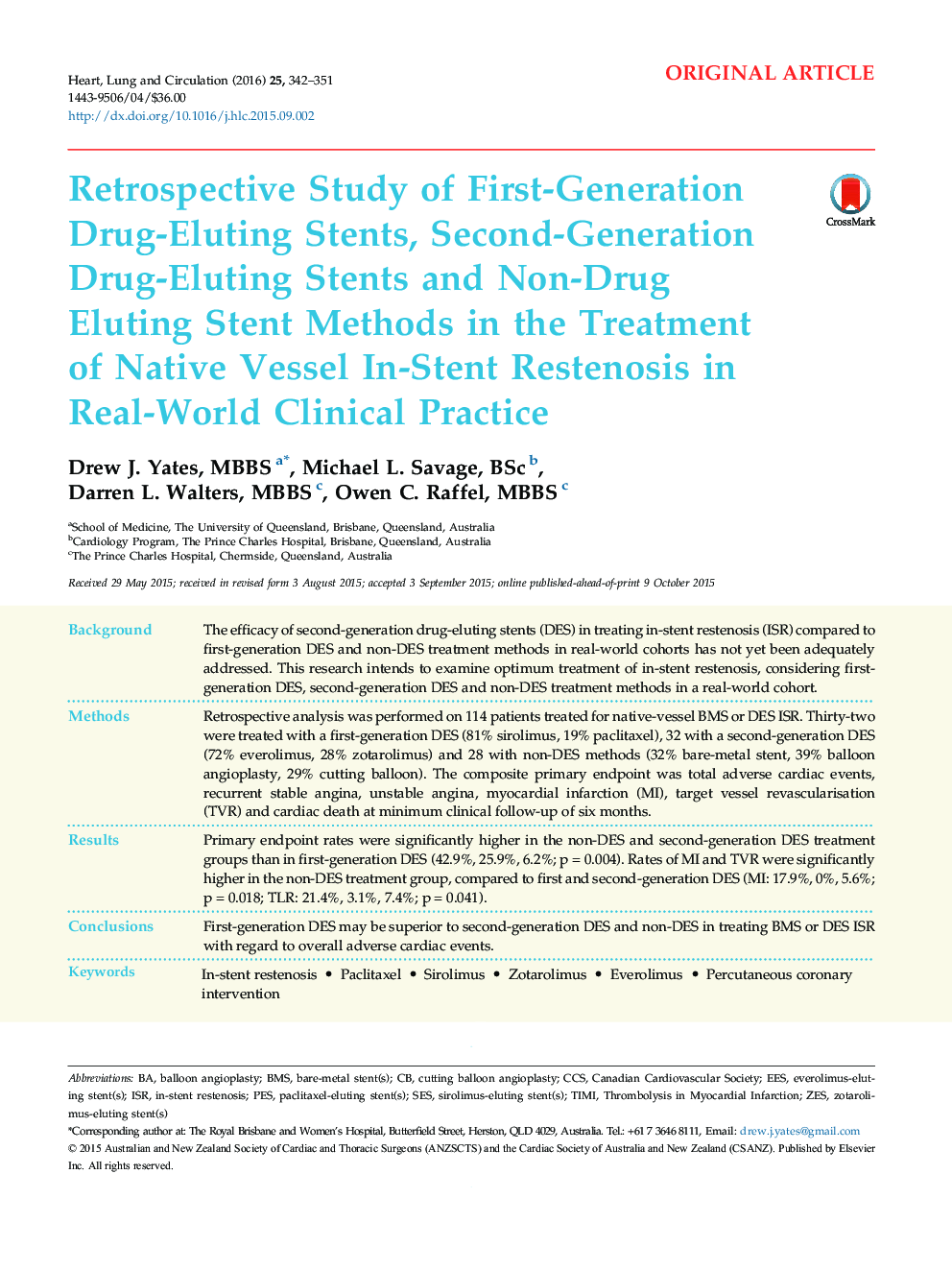| Article ID | Journal | Published Year | Pages | File Type |
|---|---|---|---|---|
| 2916812 | Heart, Lung and Circulation | 2016 | 10 Pages |
BackgroundThe efficacy of second-generation drug-eluting stents (DES) in treating in-stent restenosis (ISR) compared to first-generation DES and non-DES treatment methods in real-world cohorts has not yet been adequately addressed. This research intends to examine optimum treatment of in-stent restenosis, considering first-generation DES, second-generation DES and non-DES treatment methods in a real-world cohort.MethodsRetrospective analysis was performed on 114 patients treated for native-vessel BMS or DES ISR. Thirty-two were treated with a first-generation DES (81% sirolimus, 19% paclitaxel), 32 with a second-generation DES (72% everolimus, 28% zotarolimus) and 28 with non-DES methods (32% bare-metal stent, 39% balloon angioplasty, 29% cutting balloon). The composite primary endpoint was total adverse cardiac events, recurrent stable angina, unstable angina, myocardial infarction (MI), target vessel revascularisation (TVR) and cardiac death at minimum clinical follow-up of six months.ResultsPrimary endpoint rates were significantly higher in the non-DES and second-generation DES treatment groups than in first-generation DES (42.9%, 25.9%, 6.2%; p = 0.004). Rates of MI and TVR were significantly higher in the non-DES treatment group, compared to first and second-generation DES (MI: 17.9%, 0%, 5.6%; p = 0.018; TLR: 21.4%, 3.1%, 7.4%; p = 0.041).ConclusionsFirst-generation DES may be superior to second-generation DES and non-DES in treating BMS or DES ISR with regard to overall adverse cardiac events.
